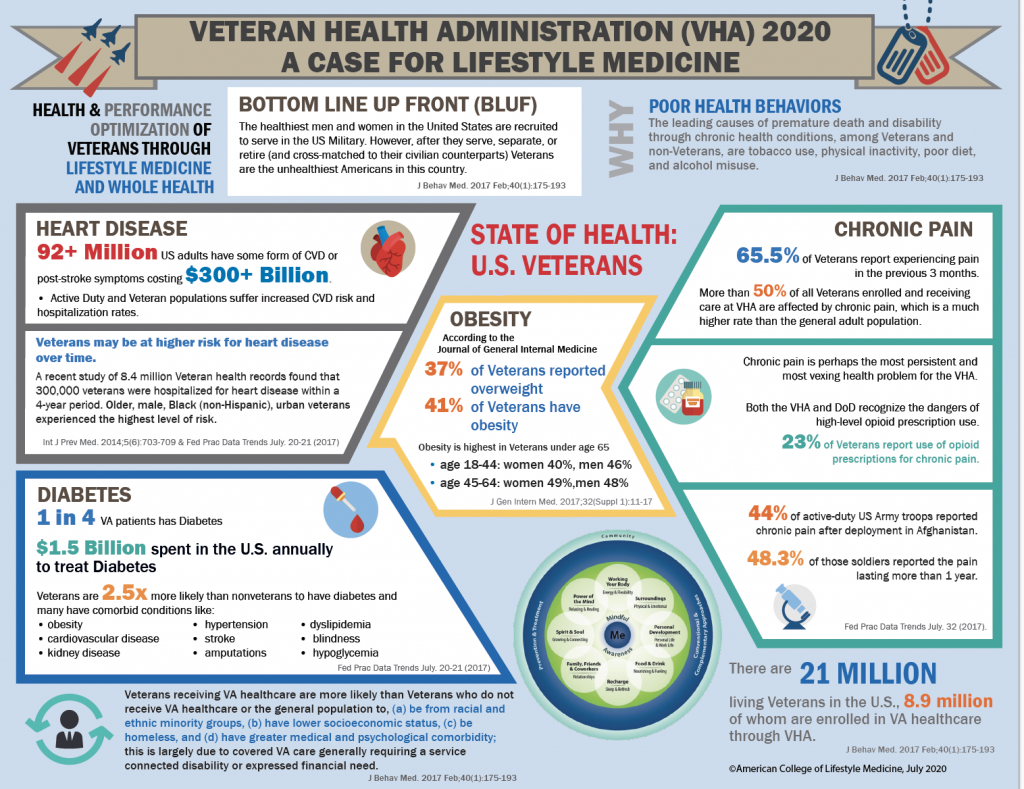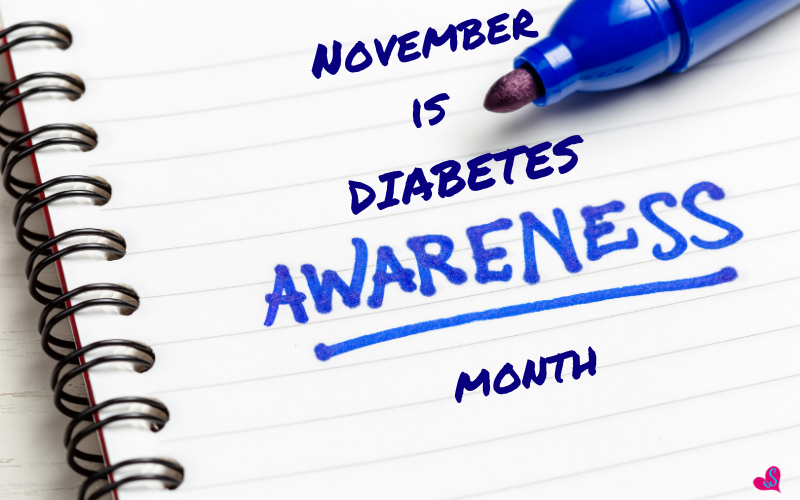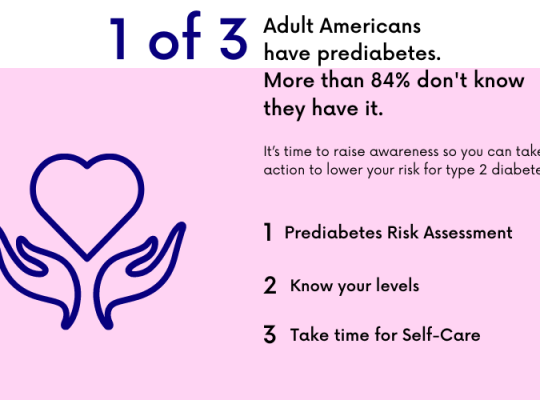In the past several years, I’ve been cognizant of my lifestyle and have worked on changing my behaviors to lower my risk for Type 2 diabetes. If you’re unfamiliar with my wellness journey, back in 2015, I was surprised to find out that my blood sugar levels were borderline prediabetic. This was the trigger that led me to start my wellness journey.
November is Diabetes Awareness Month. A reminder of its prevalence in the U.S. and the role we play as individuals to understand our risk. Sadly, in the past 20 years, diabetes has more than doubled.
Let me be specific about the most common form of diabetes – Type 2. Type 2 diabetes is a chronic condition where the cells of the body no longer responds to the insulin which acts as a key for glucose to enter the cells to either be used or stored as energy. With the cells being resistant to insulin, a high amount of blood glucose stays in circulation causing serious, sometimes fatal health problems like kidney failure, cardiovascular disease, amputations, and vision loss.
Directing your attention to these unnerving statistics according to the CDC:
- Over 1 in 10 Americans have diabetes (~34 million)
- Diabetes is the 7th leading cause of death
The Veteran Health Administration have also provided diabetes statistics specific to Veterans as you can see on this infographic created by the American College of Lifestyle Medicine:
- 1 in 4 VA patients has Diabetes
- Veterans are 2.5x more likely than nonveterans to have diabetes.

What about Prediabetes?
Prediabetes is like a ‘warning signal’ – cautioning us to pay closer attention to our health. At least, this is how I see it. When my routine lab results indicated my A1C level was nearing prediabetic (levels of 5.7% to 6.4%) and my triglyceride levels tripled, I learned this was an indication of insulin resistance.
1 in 3 adult Americans have prediabetes, however more than 80% don’t even know they have it. How do you find out? Ask your doctor for a simple blood glucose test. Usually, it comes as part of a check-up but if you haven’t had one done in awhile, I encourage you to do so. More about the blood test on this link.
The CDC also recommends getting a blood test if you have these risk factors:
- 45 years or older
- Overweight
- Family history
- Sedentary
- Had Gestational Diabetes
- Had Polycystic Ovary Syndrome
The Power of Lifestyle Change
Guess what! If you are prediabetic, you can stop the progression to Type 2 with a healthy lifestyle change. The National Diabetes Prevention Program was developed based on a study that showed lifestyle behaviors focused on healthy eating and regular physical activity reduced a person’s risk for Type 2 diabetes by 58%. Amazing right!?
Here in San Diego, I’m a Lifestyle Coach for the Skinny Gene Project – the first organization in San Diego County to be a CDC-recognized Diabetes Prevention Program provider. The program focuses on building sustainable healthy habits facilitated by a lifestyle coach and within a supportive group setting. I’ve witnessed people who have made incredible progress in this program and also have established friendships too. More about the CDC program HERE.
Take a Small Step to Better Health
What’s one small step can you do today? Is it to increase your awareness – perhaps a blood test to know your numbers? If you are prediabetic and thinking about lifestyle change, what are you ready to do? Are you ready to learn more about healthy lifestyle behaviors? Whether it’s healthy eating or more physical activity, taking small steps can make a lifetime of a difference to your health and wellness. Remember, help is available since significant lifestyle change may be hard to do on your own. Always seek support!
Questions about the National Diabetes Prevention Lifestyle Change Program? Please send me an email – elaine@evokestrong.com








